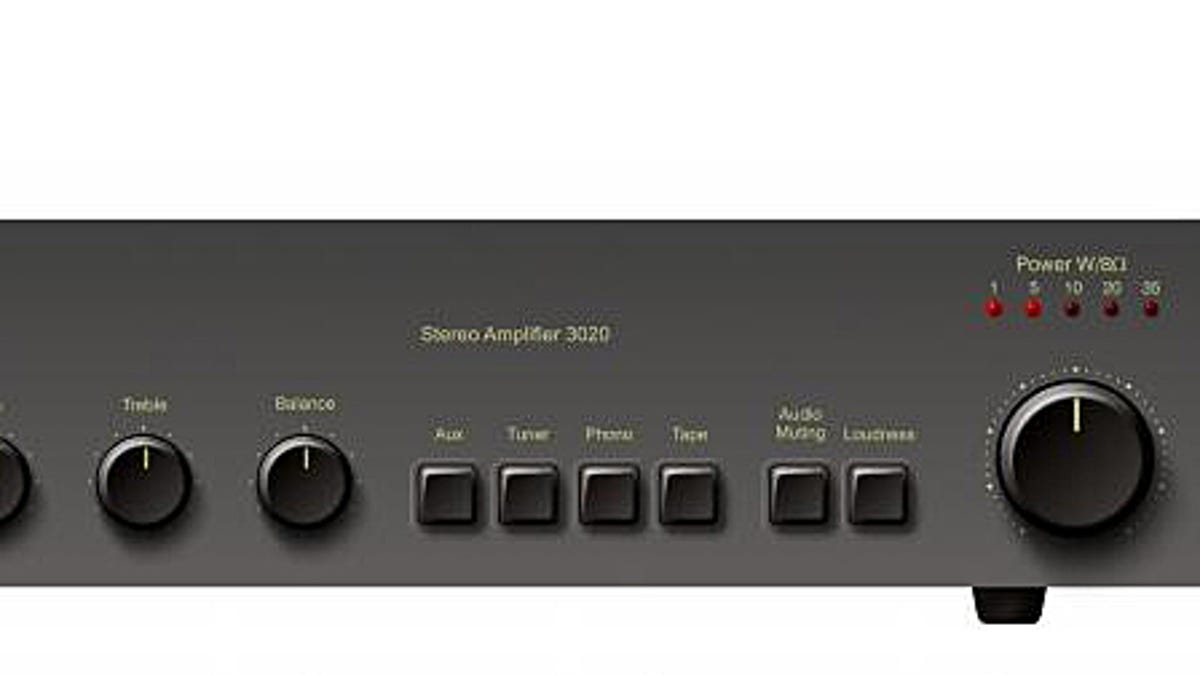NAD 3020 vs. NuForce Dia: An analog-digital amplifier showdown
Can a 32-year-old all-analog NAD 3020 amp blow away a shiny-new NuForce Dia all-digital amp?

No doubt about it, Nuforce makes audiophile products that don't conform to the old paradigms. Take a look at the Dia digital integrated amplifier. It's downright tiny, accepts only digital sources like CD, DVD, or Blu-ray players, or an Apple TV, flat-screen TV, game, or cable box. How tiny is the Dia? Just 6 inches by 4.5 inches by 1 inch; and man that's really small. It has one RCA coaxial and two Toslink optical digital inputs. The onboard digital-to analog converter accepts up to 192kHz/24-bit sources, and the analog switching stereo 24 watt per channel amplifier runs cool to the touch. I assumed the front panel's 3.5 mm jack was for headphones, but no, it's a subwoofer/line-level output. The $299 Dia weighs 1 pound. Nice!
We live in a time where most people take it on faith that new technology is always better than old tech. I don't subscribe to that theory. To my ears good-sounding LPs sound better than most CDs but what about amplifiers? How do old amps compare with the latest gear? For this shootout I compared the Dia with a 32-year-old NAD 3020 integrated amp I bought on eBay last year for $66. The 3020 is 16 inches by 3.75 inches by 10 inches and is rated at 20 watts a channel. The little Dia delivers 24 watts per channel, so despite the gigantic size differential the two amps were fairly matched. I used a pair of Dynaudio Contour 1.1 speakers for all of my listening tests.
The Dia sounded really nice, sweet, and not at all "digital" with a broad range of music. The tonal balance was slightly warm, which I like, but my only concern about the sound was it lacked get up and go. The dynamics were laid back and a bit blah for my tastes. Switching over to the 3020, the sound was livelier, and more three-dimensional and therefore more realistic. The 3020's bass definition was better, so I could hear more of the "pluck" on jazz recordings with acoustic basses. The Dia was softer and mellower, which wasn't what I expected. Acoustic guitars sounded more like themselves over the 3020. The music engaged me more, so one tune led to the next. I respected what the Dia did--the little thing is so cute--but on an emotional basis, sorry, I'd rather spend time with the 3020.
Those impressions were based on listening to CDs, so I went ahead and tried some high-resolution 96 KHz/24-bit recordings, like Paul Simon's recent "So Beautiful or So What" album. The Dia was decidedly brighter and more forward sounding; the 3020 was richer. I had an even stronger preference for the 3020 with high-resolution audio (that was decoded by my Oppo BDP-95 Blu-ray player). So in any case I'd rather listen to the NAD 3020, which also has a really nice built-in phono preamp. Yes, the 3020 is a lot bigger than the Dia. It runs hotter, doesn't have a remote, and finding a working 3020 isn't necessarily easy. But newer vintage all-analog amps from NAD, Rotel, Creek, and Onkyo won't be too hard to find. Of course, they would be even bigger than the 3020; the Dia was designed for folks looking for something that doesn't take up a lot of valuable shelf space.
The Dia is a very competent performer and would probably make more sense for most people, I don't doubt that, but if sound quality is a higher priority, consider an all-analog amp.

